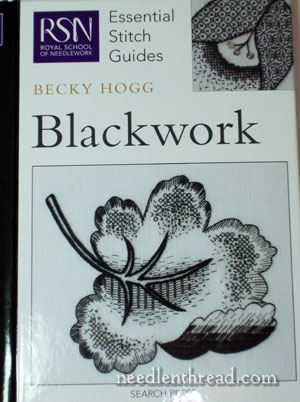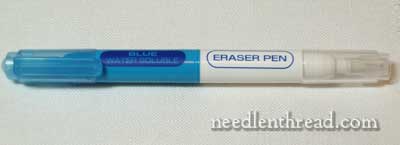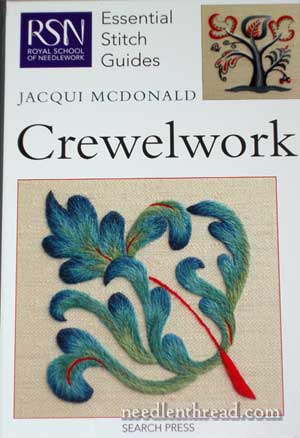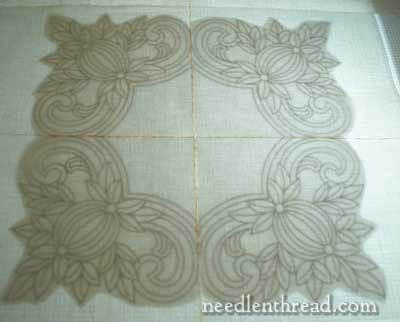January 22, 2011
15 Minutes with Needle & Thread
During the school year – and especially during the school week! – I find that dedicated stitching time on big … Continue reading 15 Minutes with Needle & Thread
January 22, 2011
During the school year – and especially during the school week! – I find that dedicated stitching time on big … Continue reading 15 Minutes with Needle & Thread
January 21, 2011
The threads arrived that I want to use for the Pomegranate Corners wool embroidery project! (Ain’t it great when thread arrives in the mail?) Once they got here, I sorted through them, change my mind a gazillion times, and finally make a few color selections.
Here they are:

January 20, 2011
Like the RSN Essential Stitch Guide for Crewelwork that I reviewed the other day, the one for blackwork is a definite must-have resource for your needlework library – even if blackwork isn’t your thing, but especially if you have an interest in it. Let me explain…
Blackwork is only sometimes my thing. There are many aspects of blackwork that I like, and I’m drawn towards certain techniques that employ elements of blackwork. I love border patterns that include blackwork, for example, and that are worked in Holbein stitch. When considered a strictly counted, linear technique, however, it doesn’t really appeal to me too much: medallions or other geometric shapes (mandalas that repeat, and gridded stars and squares and circles and so forth) that are strictly counted Holbein stitch or backstitch – as lacy and pretty as they might be – aren’t really up my stitching alley. Though I suppose, like everyone else, I do go through phases where I can see how they could be appealing!
But blackwork can be something different from this linear approach – i.e. “pictures” achieved by patterned stitching with a gradation of shading, and often employing embroidered outlines. This, I find appealing. There’s something about achieving a shaded effect by gradually changing a pattern or by gradually changing thread weights within a pattern that I think is interesting and challenging… and beautiful. I also like the variety of filling patterns that are often employed in blackwork. Filling patterns interest me – whether they are counted or not.
So the blackwork embroidery that is primarily covered in this RSN stitch guide is not necessarily the same type of charted blackwork that we see often today. Certainly, elements of this type of blackwork “fit” within the frame of what the book is all about, but in fact, the RSN stitch guide concentrates more on that latter type of blackwork – a challenging form of blackwork that is more akin to surface embroidery than it is to counted cross stitch.

January 19, 2011
There are several reasons why water-soluble, air-soluble, and “erasable” transfer pens for tracing embroidery designs make me a bit nervous. One reason is that the pens are made of a chemical substance that, in the long run, may affect fabric and threads. I tend to think that anything too chemical-ish is not the best choice to use on a fabric. Another reason is because I don’t trust them on two points: 1. I have witnessed a discoloration of fabric / threads from them; and 2. I have witnessed them re-appear as magically as they disappear.
That being said, on cotton fabric with colored cotton thread (for example, household projects like flour sack towels or pillowcases), I have used them to good effect, without any problems.
I recently procured an “erasable” water-soluble transfer pen, and I thought I’d give it a try. I was really curious about this “erasable” part! Was it a gimmick? I was also curious about how fine a line the pen would draw. Fine lines, even with marks that will wash away, are important to me in a transfer – the finer the line, the more accurately the line can be followed while stitching.

January 18, 2011
The Royal School of Needlework has begun publishing a series of “essential stitch guides” for various needlework techniques. The first two to come out in the series are on crewelwork and blackwork, and it looks as if two more will not be long in coming.
The title of the series indicates exactly what the books are: guides to the essential stitches used in the given technique. Keep in mind that they are not project books – you won’t find any practice projects in them, or anything of that nature. Rather, you’ll find the essential information for getting started (and progressing) in the needlework technique.

January 17, 2011
It seems that every year, I end up doing at least one pomegranate-oriented embroidery project! Why is that?! Well, this time, I’m using this embroidery pattern, and will be showing you the project step-by-step, so that you’re welcome to stitch a long if you like.

January 15, 2011
Last week, I showed you a “sneak peek” of the Jacobean Jumble embroidery project that I’m working on. I’ve taken a couple little turns in this project (in a number of ways), and am adjusting things as I go. Today, I thought I’d show you one turn in particular – a chain stitch swirl, worked in Soie d’Alger, which is a spun silk that’s used pretty much the same way you’d use stranded cotton.
Only it’s silk. And so it’s softly shiny, as only silk can be!
